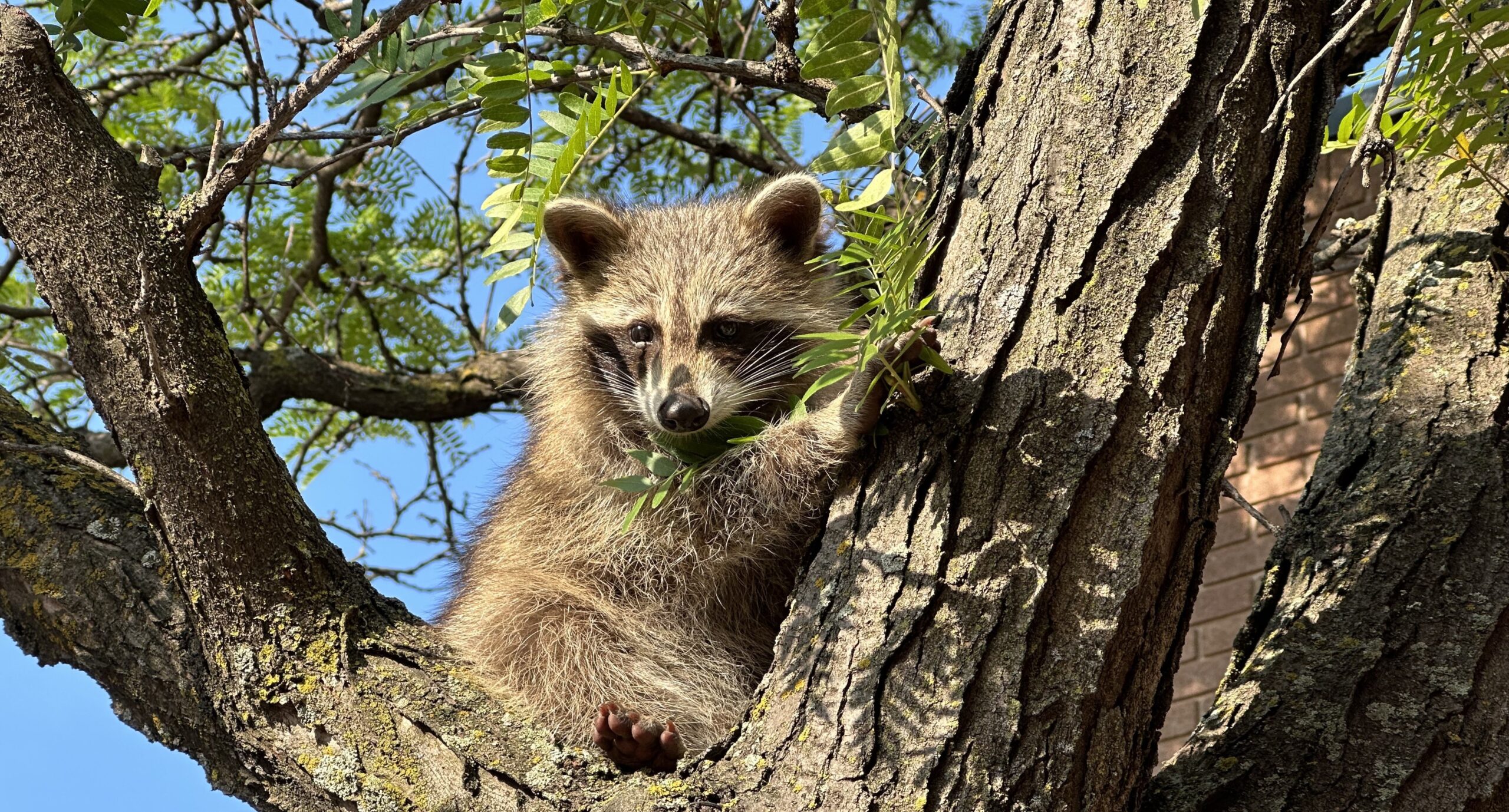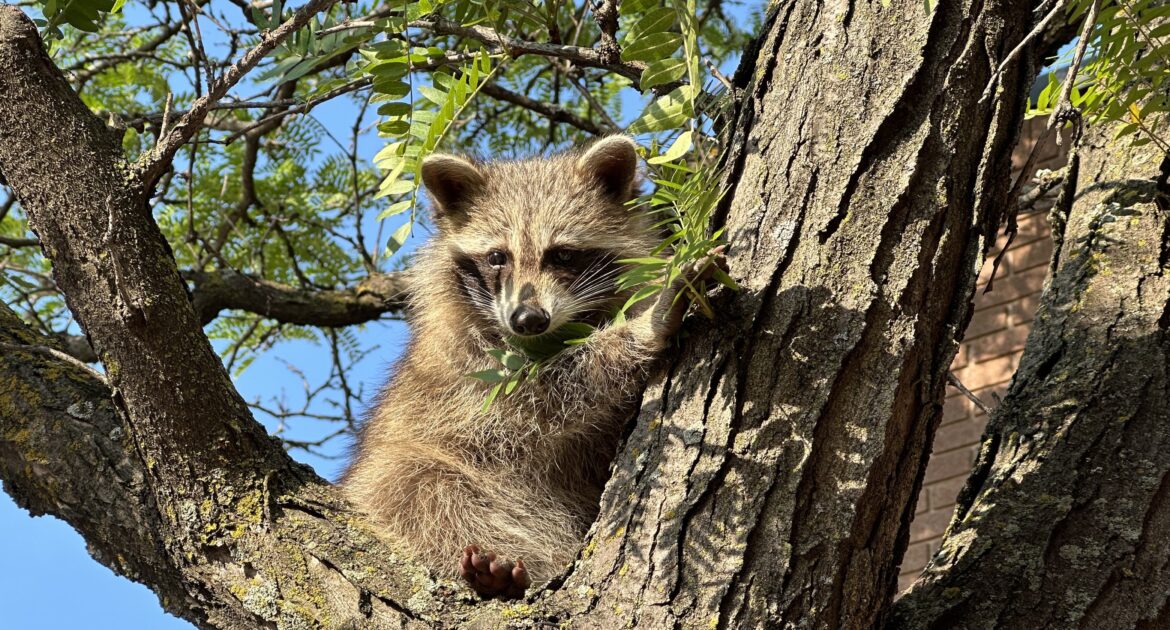Living in Kitchener, we’ve seen our fair share of wildlife encounters, but few creatures have adapted to suburban life quite like raccoons. At Skedaddle Humane Wildlife Control, we frequently hear from homeowners wondering what attracts raccoons to homes and how they can prevent these intelligent animals from taking up residence on their properties.
Understanding what draws raccoons to your home is the first step in effective prevention. These opportunistic creatures are constantly on the lookout for food, shelter, and safe places to raise their young—and unfortunately, our homes often provide all three. With over 30 years of experience removing and excluding wildlife across the Kitchener region, we’ve identified the key attractants that make your property irresistible to these clever mammals.
Common Attractants That Draw Raccoons to Your Property
Raccoons are naturally curious and incredibly resourceful, with a remarkable ability to remember where they’ve found food and shelter in the past. Understanding what attracts these animals to homes is essential for keeping them away.
Food Sources: A Raccoon’s Primary Motivation
Raccoons are primarily motivated by food, and our homes can provide an abundance of options:
- Unsecured Garbage Bins: Racoonies with agile paws excel in prying open lids or toppling over containers, especially those that aren’t secure.
- Pet Food Left Outdoors: Leaving food out for pets overnight is akin to laying out a welcome feast for raccoons.
- Compost Piles: If not properly maintained, these can offer a buffet of food scraps.
- Bird Feeders: Though intended for birds, the seeds also attract raccoons, who are excellent climbers.
- Vegetable Gardens and Fruit Trees: The allure of home-grown produce is strong for both homeowners and raccoons.
To combat this, store all garbage in animal-proof containers with tight-fitting lids or locks. Consider feeding pets indoors or removing any uneaten food before dusk. Harvest ripe fruits and vegetables promptly and consider using fencing around gardens.
Shelter Opportunities That Raccoons Can’t Resist
Apart from food, raccoons are equally motivated by opportunities for secure shelter, especially during the region’s cold winters and maternal nesting periods:
- Uncapped Chimneys: These structures are perfect vertical passages into your warm home.
- Damaged Roof Areas: Loose shingles, rotted fascia boards, or deteriorated soffits are common entry points that raccoons readily exploit.
- Open Vents: Unprotected roof, gable, or dryer vents offer direct access to attics.
- Spaces Under Decks or Sheds: These areas offer ideal dens close to the home.
- Accessible Attics: Warm, dry, and typically undisturbed, attics are prime real estate for raccoon families.
In Kitchener, raccoons have been known to create openings as small as 4 inches wide, using their powerful paws and teeth to enlarge them quickly. Almost no part of your home’s exterior is beyond their reach due to their adept climbing skills.
The Hidden Factors That Make Your Home Attractive to Raccoons
Beyond the obvious attractions of food and shelter, several subtler factors can make your property particularly appealing to raccoons.
Water Sources: Essential for Survival
Access to water is crucial for raccoons, not just for drinking but also for their unique food-washing behaviour.
Common Water Attractions:
- Decorative ponds and water features
- Pet water bowls left outside
- Bird baths and fountains
- Swimming pools and hot tubs
- Areas with poor drainage that create puddles
Nighttime Visibility and Human Patterns
Raccoons are also influenced by human activity patterns, which can inadvertently make homes more appealing:
- Outdoor Lighting: While raccoons are nocturnal, some lighting can assist them in finding food without feeling too exposed.
- Predictable Human Schedules: They quickly learn routines such as garbage collection days or habitual food placement times.
- Seasonal Property Usage: Homes used seasonally may offer raccoons extended periods with minimal human interference.
How Raccoons Are Getting Into Your Home
Understanding raccoon entry methods is vital for implementing effective prevention strategies, as these persistent animals often exploit overlooked weaknesses.
Common Entry Points
Common entry points for raccoons include roof junctions, which are vulnerable spots where roof sections meet, and soffit intersections, commonly found at the roof’s edges where soffits join. Roof vents, often made of plastic or aluminum, are another target since they can be damaged or displaced by determined raccoons. Uncapped chimney openings also pose a significant risk, providing direct access to your home’s interior.
Signs That Raccoons Have Already Entered
- Unusual Noises: Sounds like thumping, scratching, or raccoon vocalizations are most common at dawn or dusk.
- Visual Damage: Indicators include torn shingles, displaced vent covers, or damaged fascia boards.
- Dark Smudge Marks: Oily residues are left by raccoon fur around entry points.
- Raccoon Droppings: Typically located in concealed areas near den sites.
The Damage Raccoons Can Cause To Your Property
Once raccoons take up residence, they can cause substantial and costly damage that extends far beyond their initial entry point.
Structural Damage
Raccoons can cause significant structural damage within a home. They often trample, tear, or soil insulation, reducing its effectiveness and increasing energy costs. Chewed electrical wiring presents a serious fire hazard, while damaged HVAC ducts compromise heating and cooling efficiency. In addition, raccoons may chew on or contaminate wooden supports, further weakening the home’s structural integrity.
Health and Safety Concerns
In addition to property damage, raccoons bring significant health risks:
- Baylisascaris Procyonis: This parasitic roundworm, found in their droppings, can cause serious illness if ingested.
- Other Diseases: Raccoons are carriers of leptospirosis, giardiasis, salmonella, and rabies.
- Secondary Pests: The presence of raccoons often leads to infestations of fleas, ticks, and mites, which can spread to humans and pets.
Effective Raccoon Prevention Tips From Our Experts
Effective raccoon prevention requires a combination of vigilance, maintenance, and strategic modifications to your property. Drawing on decades of experience in raccoon removal throughout Kitchener, our experts have developed proven strategies to keep these clever animals at bay.
One of the most important steps in raccoon prevention is securing your home’s exterior. Regular property inspections are essential for identifying potential entry points before raccoons can exploit them. Professional exclusion techniques can further fortify your home. For instance, installing heavy-gauge screening over vents, capping chimneys with secure covers, and reinforcing soffit areas can effectively block access. Additionally, securing the perimeters of decks and sheds with buried wire mesh creates a robust barrier against these persistent intruders.
Another critical aspect of raccoon prevention involves modifying your property to make it less appealing to these animals. Removing food attractants is a key step—this includes feeding pets indoors, promptly cleaning up fallen fruit, and ensuring garbage is securely stored. Limiting climbing access is equally important. Trimming tree branches that provide a pathway to your roof and installing barriers on downspouts can significantly reduce raccoon access points. For added protection, motion-activated deterrents can be an effective way to discourage raccoons from approaching your property.
By combining these strategies, you can create a less inviting environment for raccoons and protect your home from unwanted visitors.
Prevent Raccoons From Coming Into Your Home with Skedaddle
Raccoon prevention requires vigilance, maintenance, and sometimes professional intervention. If raccoons are a concern on your property, or if you suspect they have already entered your home, Skedaddle Humane Wildlife Control is here to assist. With over 30 years of experience in safe and humane wildlife removal, we can help you secure your home and restore peace of mind. Contact us today for professional raccoon prevention and removal services, and safeguard your home from future invasions.




